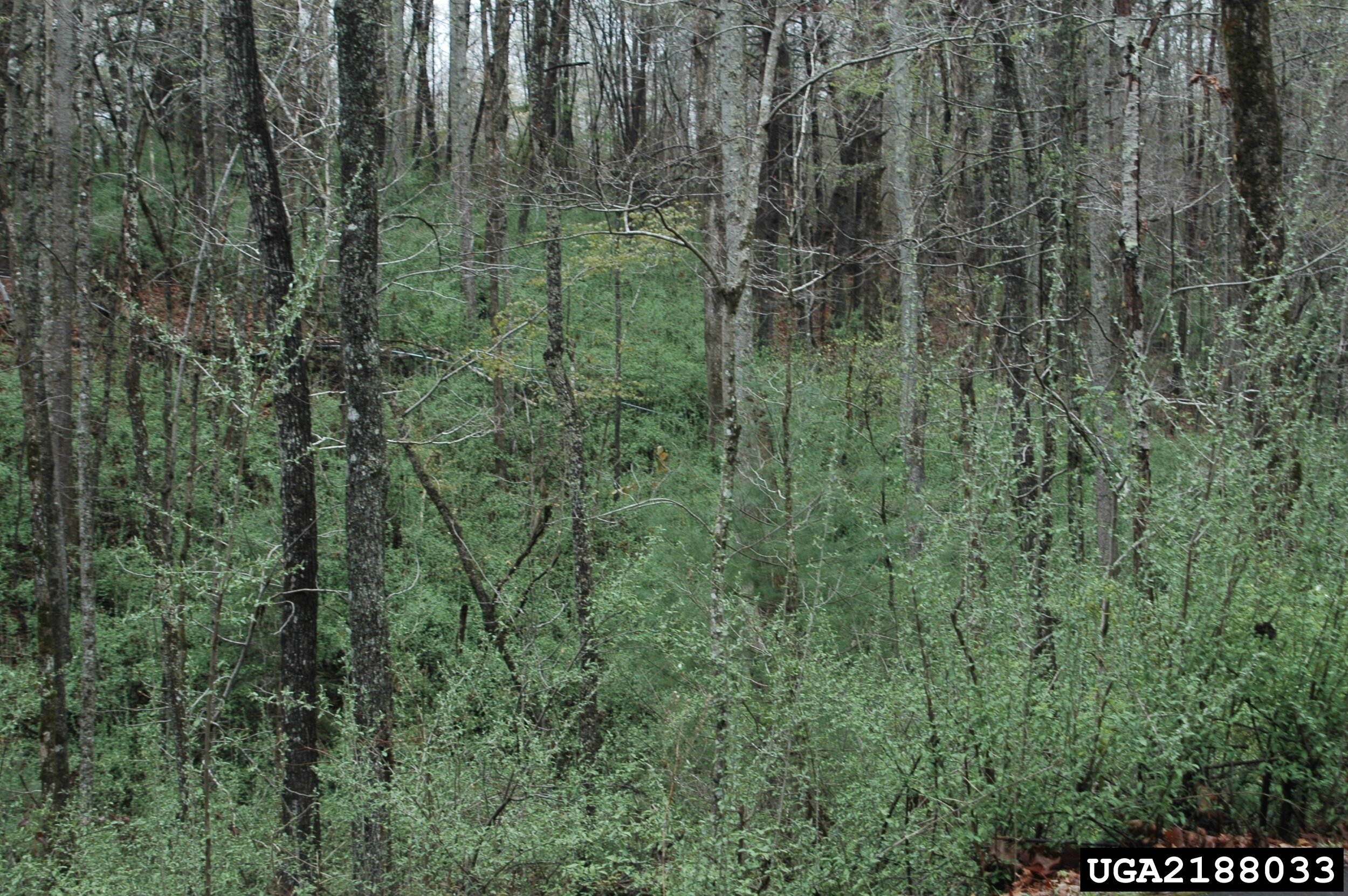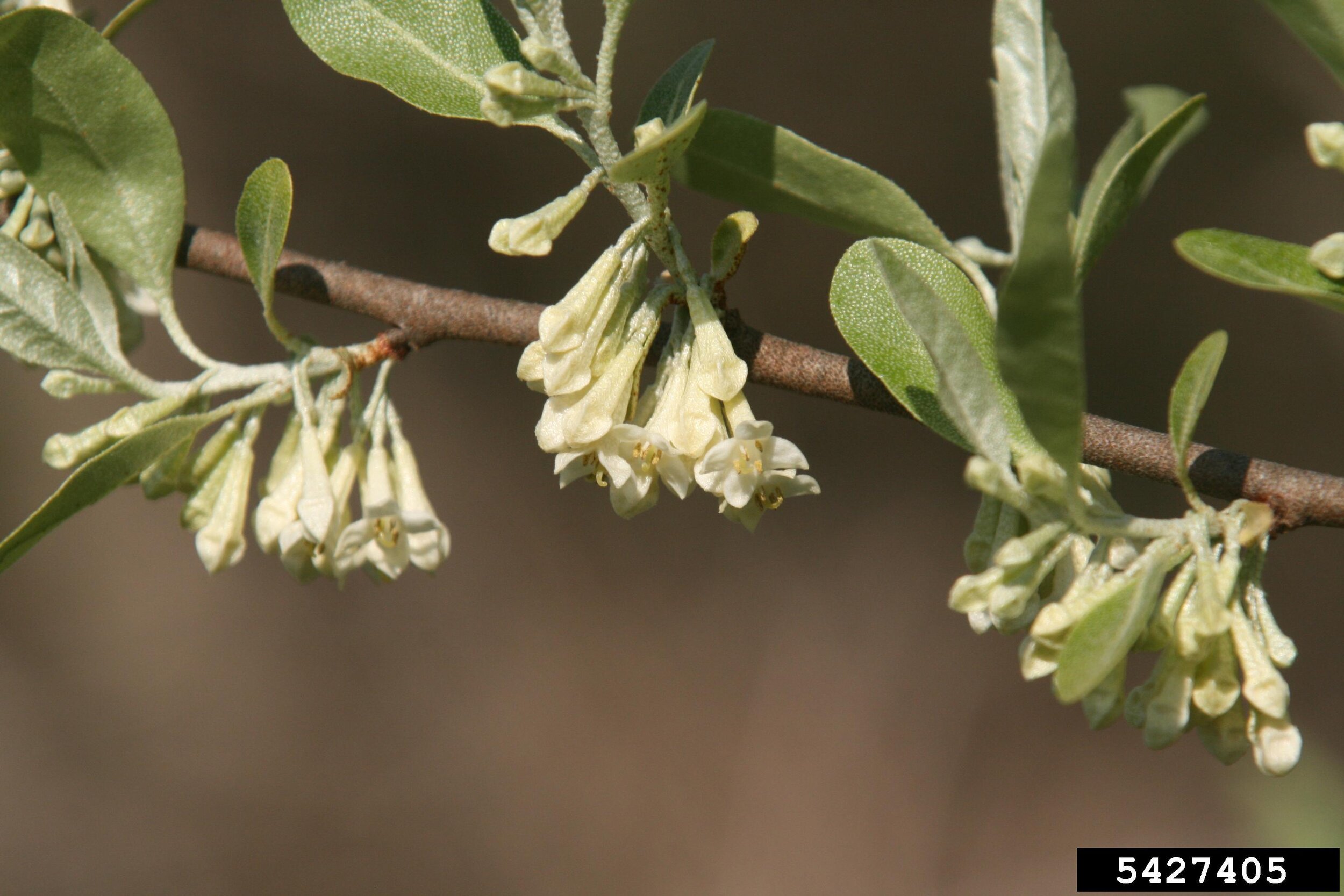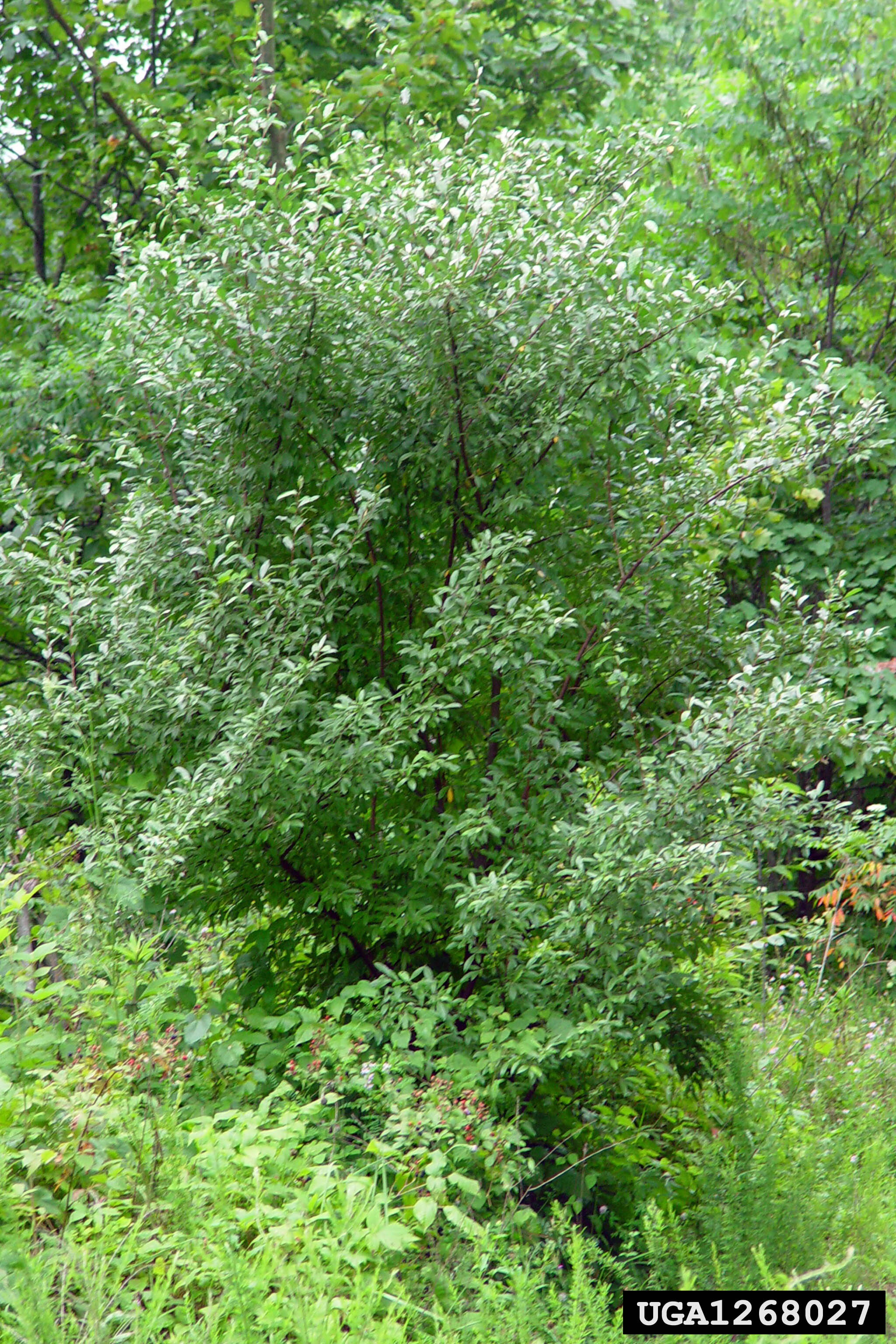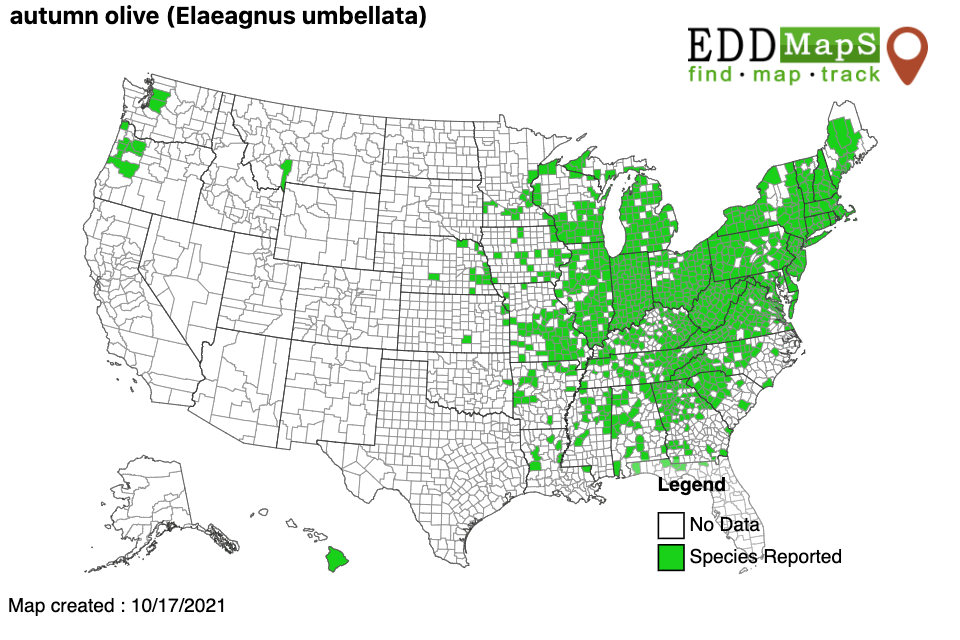October 2021 Invasive Plant of the Month
SICIM Email
Autumn Olive (Elaeagnus umbellata)
Autumn olive (Elaeagnus umbellata) is a medium to large, fast-growing, multi-stemmed, deciduous shrub that can grow up to 20 feet tall and 30 feet wide. It is native to eastern Asia and was introduced to the United States from Japan in 1830. Starting in the 1950s it was recommended to be planted for erosion control, wildlife benefits, landscaping, and soil reclamation. Autumn olive produces copious fruits that birds consume and then distribute the seed to grow in numerous habitats including open woodlands, old fields, and roadsides. It has been reported in every county of Indiana and is now found over the eastern half of the United States.
IDENTIFICATION & BIOLOGY: Leaves: Alternate, oval to lanceolate, smooth-edged (often with wavy edges too), and 1-inch wide and 1 – 3 inches long. The upper surface is dull to bright green, while the lower surface is silvery with brown and silvery scales. The leaves persist into winter. Flowers: White to yellowish-cream, tubular with 4 spreading lobes that occur in clusters of 5 to 10. Fruits: Silvery round fruit ripens to bright red with silvery scales. Bark: Bark is ashy brown, and silvery scales and brown dots densely cover young twigs, giving them a coppery appearance. Older branches often have sharp, stout thorns.
LOOK-A-LIKES: Autumn olive has no similar native plants but is easily confused with Russian olive (Elaeagnus angustifolia L.) which is considered invasive in many parts of the Midwest. Unlike autumn olive, Russian olive has stiff peg-like thorns, and has silvery scales covering both sides of its mature leaves.
HABITAT & DISTRIBUTION: Autumn olive is found in disturbed areas, along roadsides, in pastures, fields, and open woodlands. It is able to survive on infertile soils due to its nitrogen-fixing root nodules. It can also survive the effects of salt, drought, and acidic soils. However, it does not grow well in wet, dry, or shady habitats. It has been reported in every county of Indiana and is now found over the eastern half of the United States.
ECOLOGICAL THREAT: Autumn olive exhibits prolific fruiting, rapid growth, is widely dispersed by birds, and can thrive in infertile soil. Each shrub has the ability to produce 20,000 to 54,000 seeds per year. Due to the large available seed bank autumn olive can become a problem in pastures and other sunny areas. Because of its nitrogen-fixing capabilities, it has the capacity to adversely affect the nitrogen cycle of the native communities that thrive in poor soils. It is very competitive against native species in open habitats like prairies and savannahs. It can also reproduce through the roots by root clones. Due to this it can regenerate after a fire or cutting; even coming back thicker than before. It also creates shade that suppresses native plants that require direct sunlight.
CONTROL: The most effective control is to prevent autumn olive from becoming established. Plants should be removed as soon as possible when they are found. Small plants and seedlings can be hand-pulled, especially when the soil is moist. However, root fragments left in the soil may resprout. Because of its ability to reproduce by root clones, cutting or mowing these shrubs can cause vigorous resprouting. Therefore, stumps or resprouts must be treated with herbicide for control to be effective. Several herbicides have been used alone or in combination for autumn olive control, including glyphosate and triclopyr. Foliar applications of triclopyr (1 –2%) or glyphosate (1 – 2%) are effective on resprouts following cutting during the growing season. Glyphosate (20%) can also be effective when applied directly to cut stumps immediately after cutting. Applying triclopyr (20%) mixed with a basal oil directly to the bark on the lower portion of the stems is also an effective control. Repeat treatments and may be required.
IMPORTANT: The pesticide label is the law! When using any chemical control, always read the entire pesticide label carefully, follow all mixing and application instructions and use all personal protective gear and clothing specified. Contact the Office of Indiana State Chemist (OISC) for additional pesticide use requirements, restrictions or recommendations.
REFERENCES & OTHER RESOURCES:
https://www.illinoiswildflowers.info/trees/plants/autumn_olive.htm
https://www.misin.msu.edu/facts/detail/?project=misin&id=6&cname=Autumn+olive
https://www.nrcs.usda.gov/Internet/FSE_DOCUMENTS/stelprdb1081635.pdf
https://woodyinvasives.org/woody-invasive-species/autumn-olive/
https://mipncontroldatabase.wisc.edu/search?name=Elaeagnus_umbellata
https://mnfi.anr.msu.edu/invasive-species/AutumnOliveBCP.pdf
LOOK-A-LIKE REFERENCES:
#AutumnOlive #Eleagnusumbellata #IndianaInvasivePlants #IndianaInvasviesInitiative






